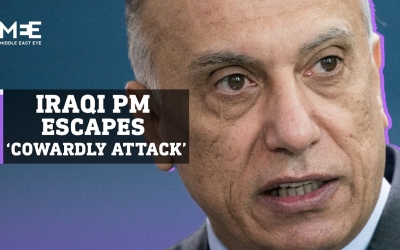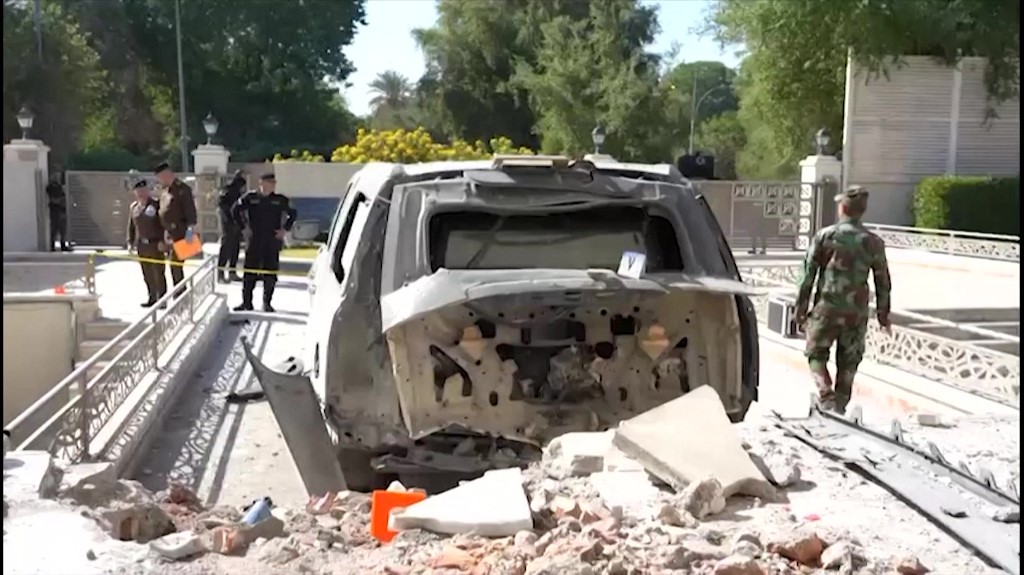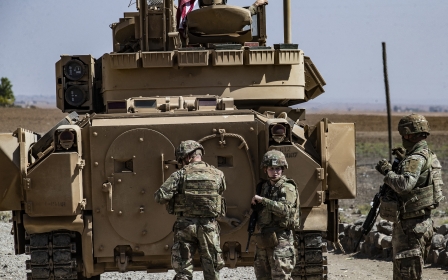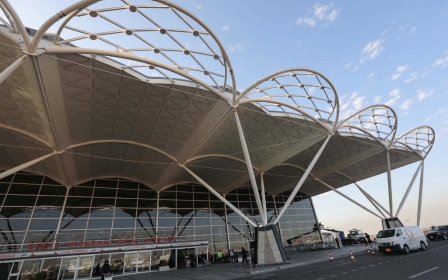Iraq assassination attempt signals new era of non-state drone attacks
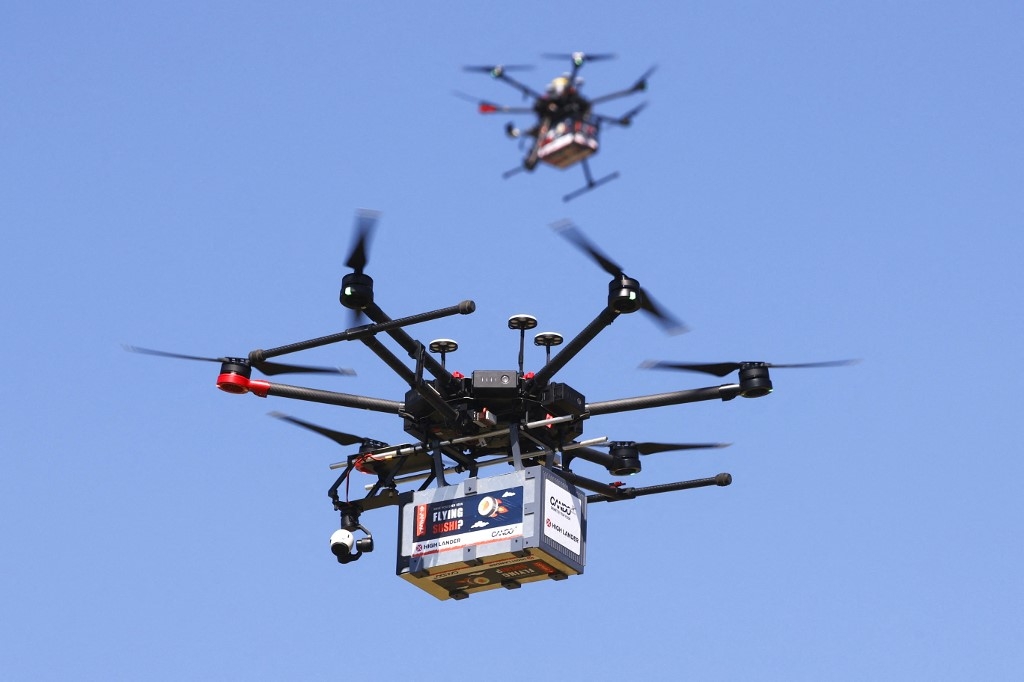
Iraq's Prime Minister Mustafa al-Kadhimi survived an assassination attempt on Sunday, when drones were used to target his residence in Baghdad. Two of the drones deployed in the attack were shot down, but the third managed to strike Kadhimi's residence, wounding two of his bodyguards.
Drones have become an effective weapon of political violence for dissidents and non-state actors in the 21st century, a precedent set by the Islamic State (IS) group during the battle for Mosul between 2016 and 2017.
For a decade after the US declared its 'war on terror', it had a monopoly on drones. Terrorist groups used smaller commercial versions to strike back, ushering in the second phase of the 'drone wars'
Venezuelan President Nicolas Maduro survived a similar assassination attempt by drone in August 2018. In January 2019, a drone attack by Houthi rebels on a Yemeni government military parade killed seven, including senior officers.
For more than a decade after the US declared its “war on terror”, it had a monopoly on drones, such as the Predator and Reaper. Terrorist groups such as IS employed smaller commercial versions to strike back in 2017, ushering in the second phase of the “drone wars”.
The most significant assassination by drone was ordered by then US President Donald Trump against Qassem Soleimani, commander of Iran's Quds force, who was killed alongside Abu Mahdi al-Muhandis, deputy commander of Iraq's paramilitary Popular Mobilisation Forces, at Baghdad airport in January 2020.
New MEE newsletter: Jerusalem Dispatch
Sign up to get the latest insights and analysis on Israel-Palestine, alongside Turkey Unpacked and other MEE newsletters
These assassinations portend a future trend of the weaponisation of drones by states and non-state actors. If the sniper rifle or car bomb was the tool of modern political violence in the 20th century, the drone has emerged as its digital, postmodern equivalent in the 21st century.
Islamic State drones
In August 2014, IS first used commercially purchased drones to collect battlefield intelligence or document the effectiveness of its suicide bombings. Afterwards, IS attached mortar shells to these drones, creating a flying improvised explosive device (IED) to be dropped against enemy troop formations.
So important were these weapons to IS that it announced in January 2017 an “unmanned aircraft of the Mujahideen” unit. In September of that year, the US military targeted Junaid ur Rehman, a drone pilot trainer and engineer of this unit, near Mayadin in eastern Syria.
Even though IS drones had little strategic or operational effect on the battlefield, they served as a means to terrorise forces that sought to expel it from Mosul, and the footage was meant to inspire its supporters. While the assassination attempts in Venezuela and Iraq failed, they still delivered a message to their intended targets, demonstrating their vulnerability.
In the assassination attempts in Venezuela and Yemen, high-ranking officials were gathered tightly together in a single location during a parade, making a tempting target. Alongside Maduro were the interior minister and the supreme court’s chief judge. In Yemen, senior military commanders and the governor of Lahej province were gathered together before the strike.
The attack against Maduro represented the first assassination attempt by drone against a head of state. The Venezuelan authorities claimed that the weapon was a DJI Matrice 600, which costs $5,000 and is ordinarily used by professional photographers.
The Houthis allegedly deployed an Iranian-made Qasef-1, which uses “off-the-shelf” commercial technology produced by electronic suppliers based mostly in Asia.
Worrying for Iraq's future
While the attack in Venezuela failed, the one in Yemen succeeded, killing its intended targets. Ironically, the assassination occurred at al-Anad airbase, once the headquarters for American forces conducting the drone war against al-Qaeda. The site where the drone war in Yemen began was itself attacked by a drone.
The Houthis have also used ballistic missiles against their foes.
The ballistic missile emerged as the symbol of 20th-century modern warfare, developed in Nazi Germany as the V2, the first human-made object to enter space, deploying the same technology that would later be used in ballistic nuclear missiles and rockets to reach the moon.
Houthi strategy now involves low-tech drones alongside sophisticated missiles, both of which have been used to strike targets deep into Saudi Arabia, and both very effective weapons of asymmetrical warfare in sowing insecurity. The latest Iraqi assassination attempt is part of this trend and signals worrying instability for Iraq’s future.
In defence of commercial hobby drones, China-based firm Skywalker Technologies told the Financial Times: “As a manufacturer, we are unable to control what people do with them, similar to the manufacturers of pick-up trucks, cars or other items that have been weaponised in conflict zones.”
The statement alludes to the evolution of the tools of terrorism. The 20th century was ushered in by the assembly line that mass-produced the automobile, which would become the vehicle of choice for terrorists in the 1970s and 80s. The same century’s greatest achievement in mass transportation was the civilian airliner, which would be used as missiles on 9/11 to strike New York and Washington.
Brazen attack
In the 21st century, the drone represents the evolution of this trend. In the 20th century, a sniper ensconced in a building nearby would have conducted an assassination. In the 21st century, someone remotely controlling a drone has the potential to wreak significant instability.
If the latest attempt was carried out by IS, which innovated the use of drones as a means of political violence, it would mean the terrorist group has carried out its most brazen attack on one of Baghdad’s most fortified areas.
If one of the Iranian-affiliated Iraqi militias were responsible for the attack, the drone strike would represent a coup attempt
That would not be disastrous news for Iraq’s stability. Even if it’s a major breach of security, IS serving as a threat to the state is not unprecedented.
However, if one of the Iranian-affiliated Iraqi militias were responsible for the attack, the drone strike would represent a coup attempt. After the October elections, the list of candidates from these militias fared poorly. During a recent protest against the results, some of their followers were killed by Iraqi security forces.
If this drone strike was retaliation, it could portend one of the most serious challenges by the militias to the Iraqi state.
The attack might have served as a provocation for the prime minister to lash out or to serve as a message of intimidation. Regardless, assigning the blame for the attack will be a delicate task for Kadhimi in its aftermath.
The views expressed in this article belong to the author and do not necessarily reflect the editorial policy of Middle East Eye.
This article is available in French on Middle East Eye French edition.
Middle East Eye delivers independent and unrivalled coverage and analysis of the Middle East, North Africa and beyond. To learn more about republishing this content and the associated fees, please fill out this form. More about MEE can be found here.



